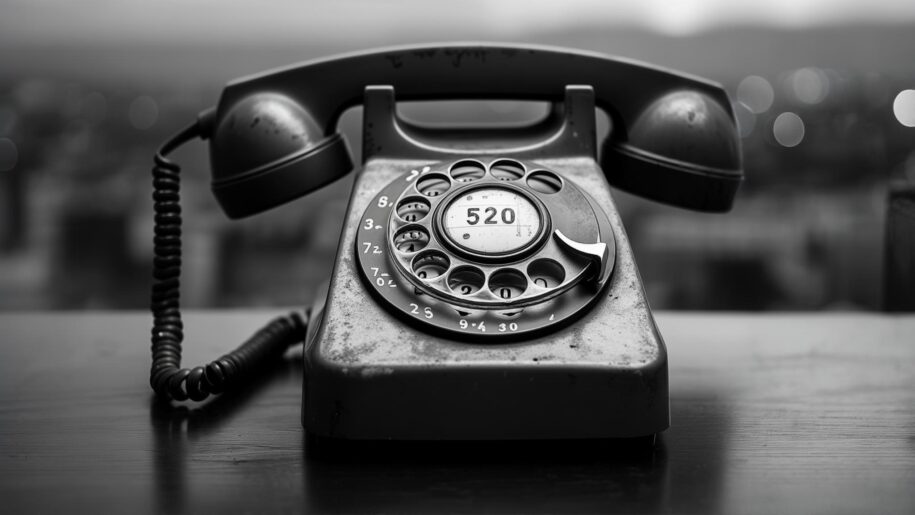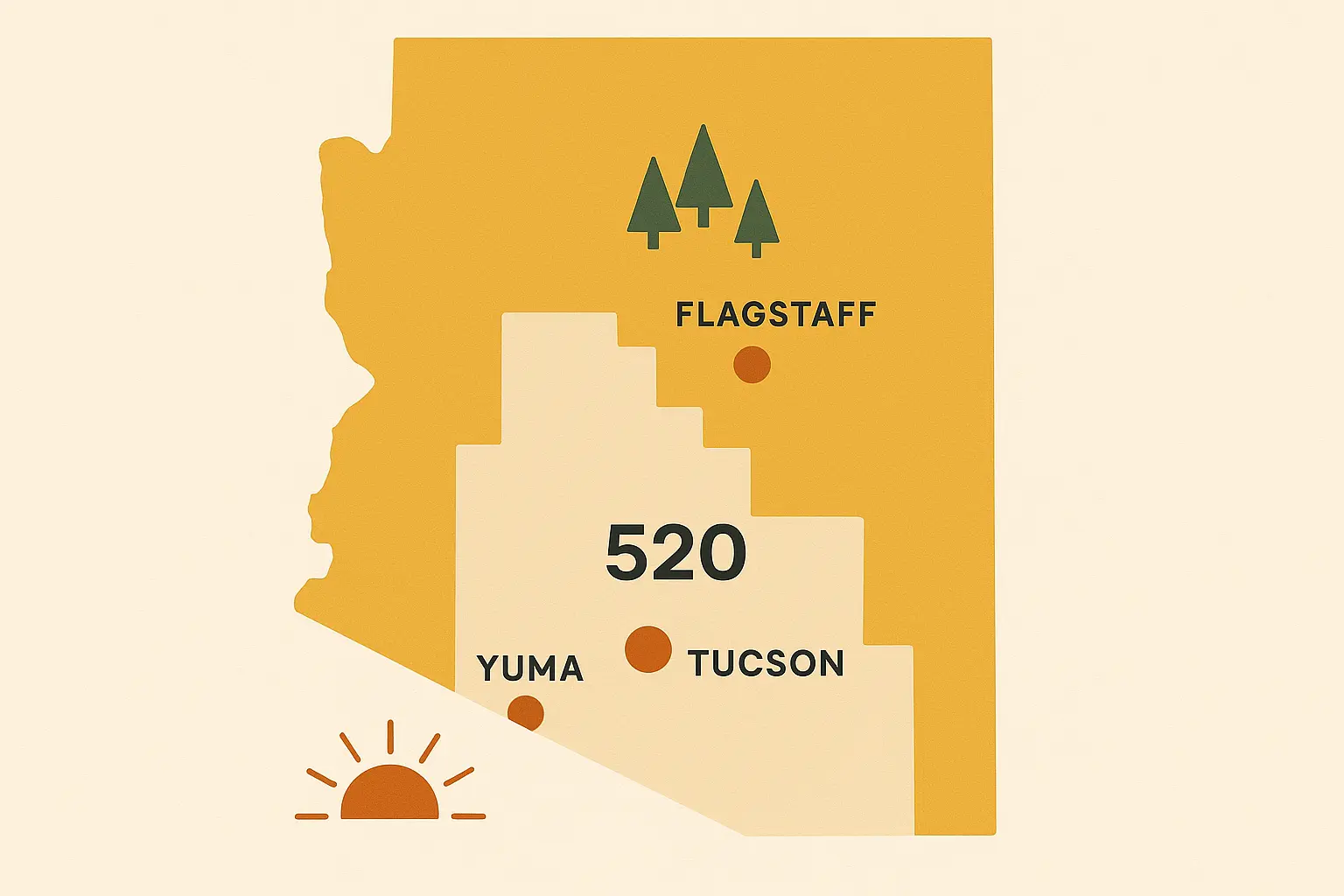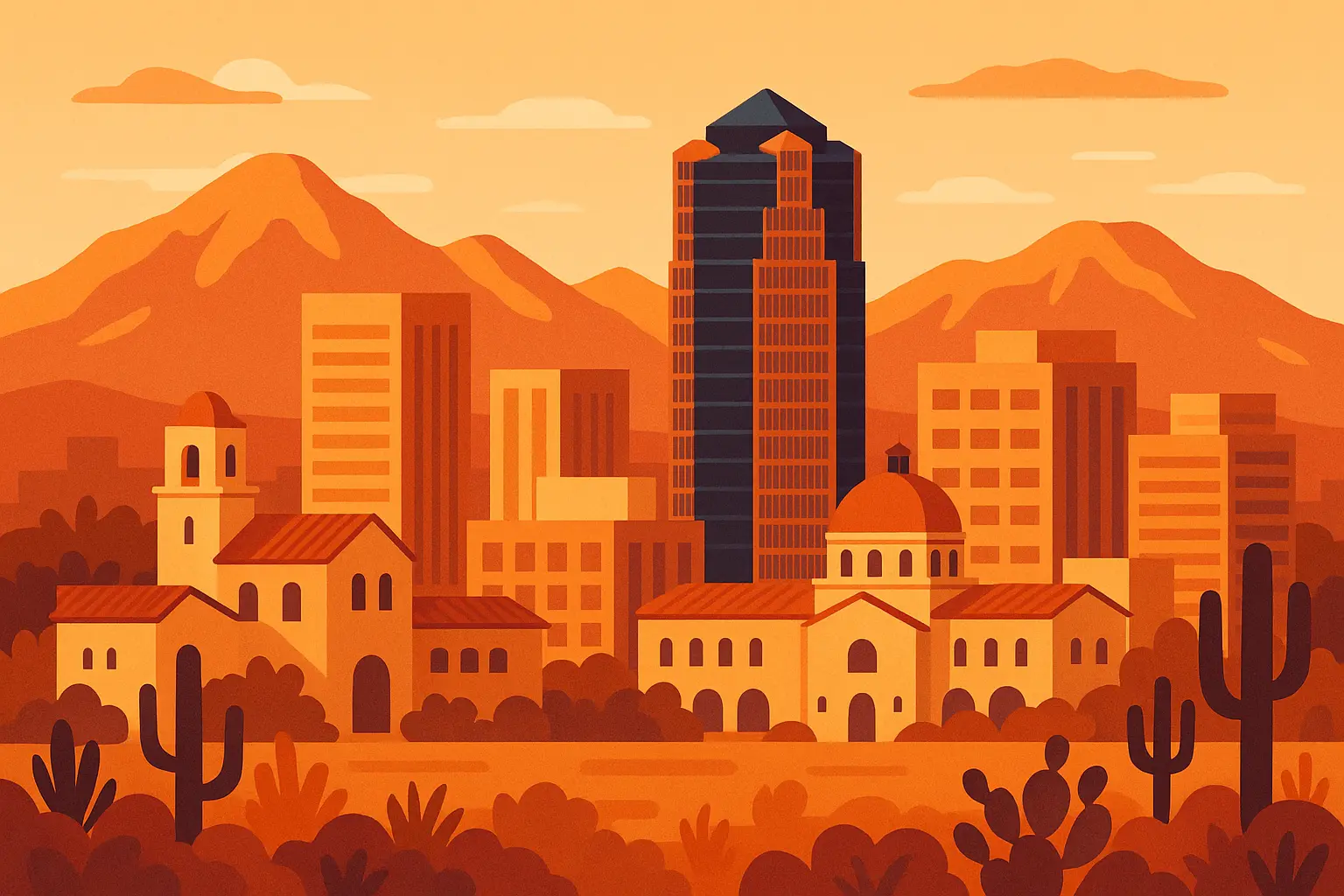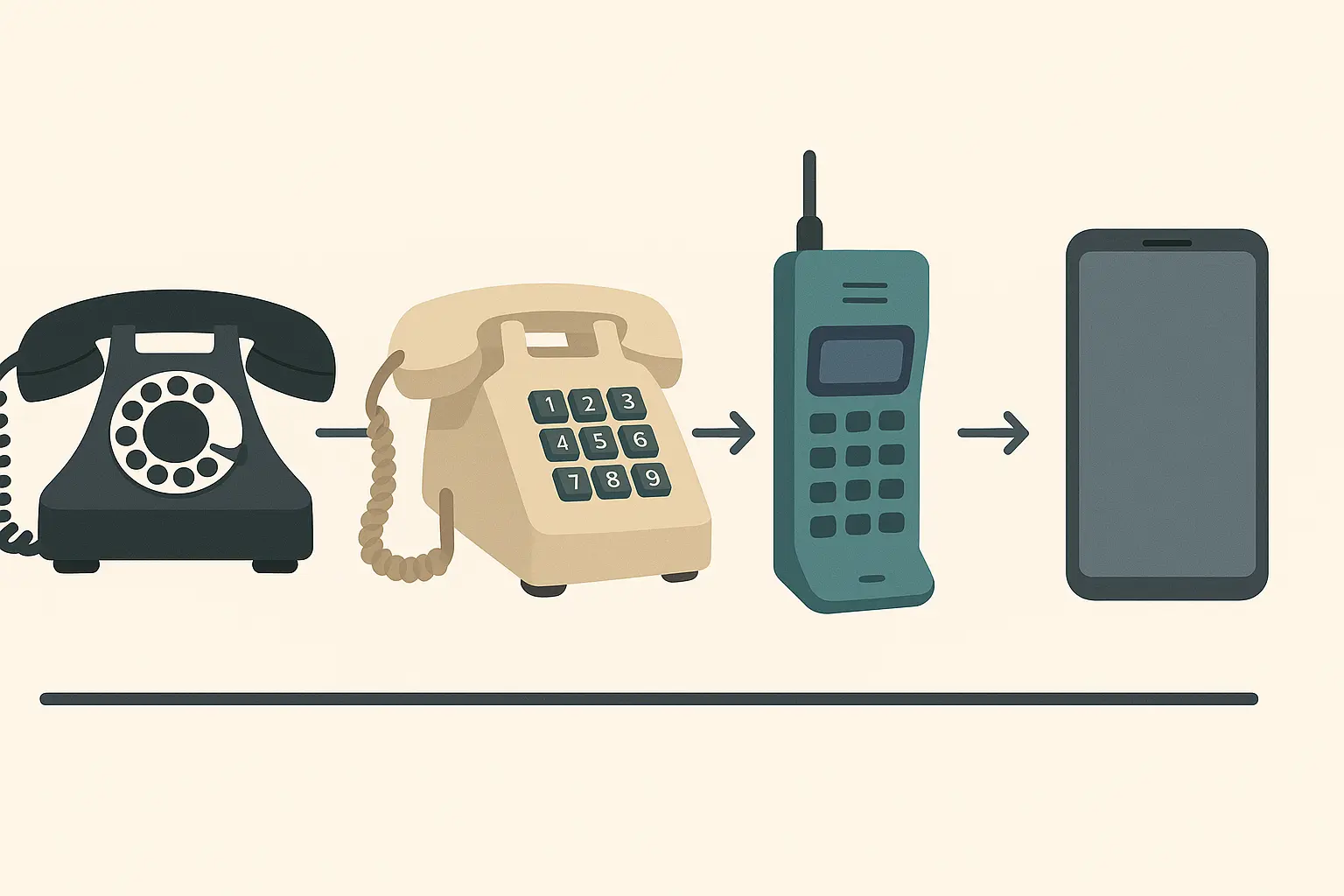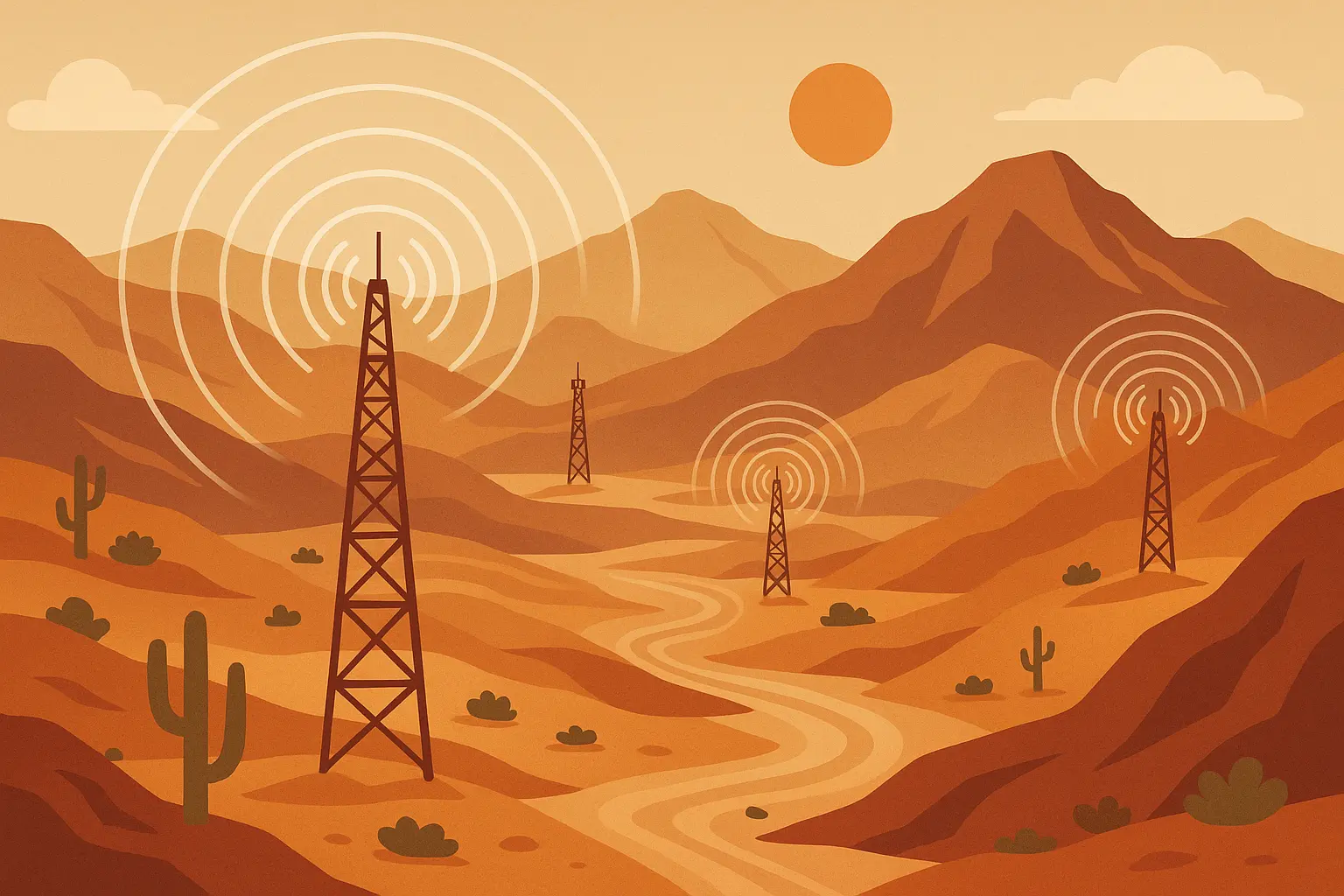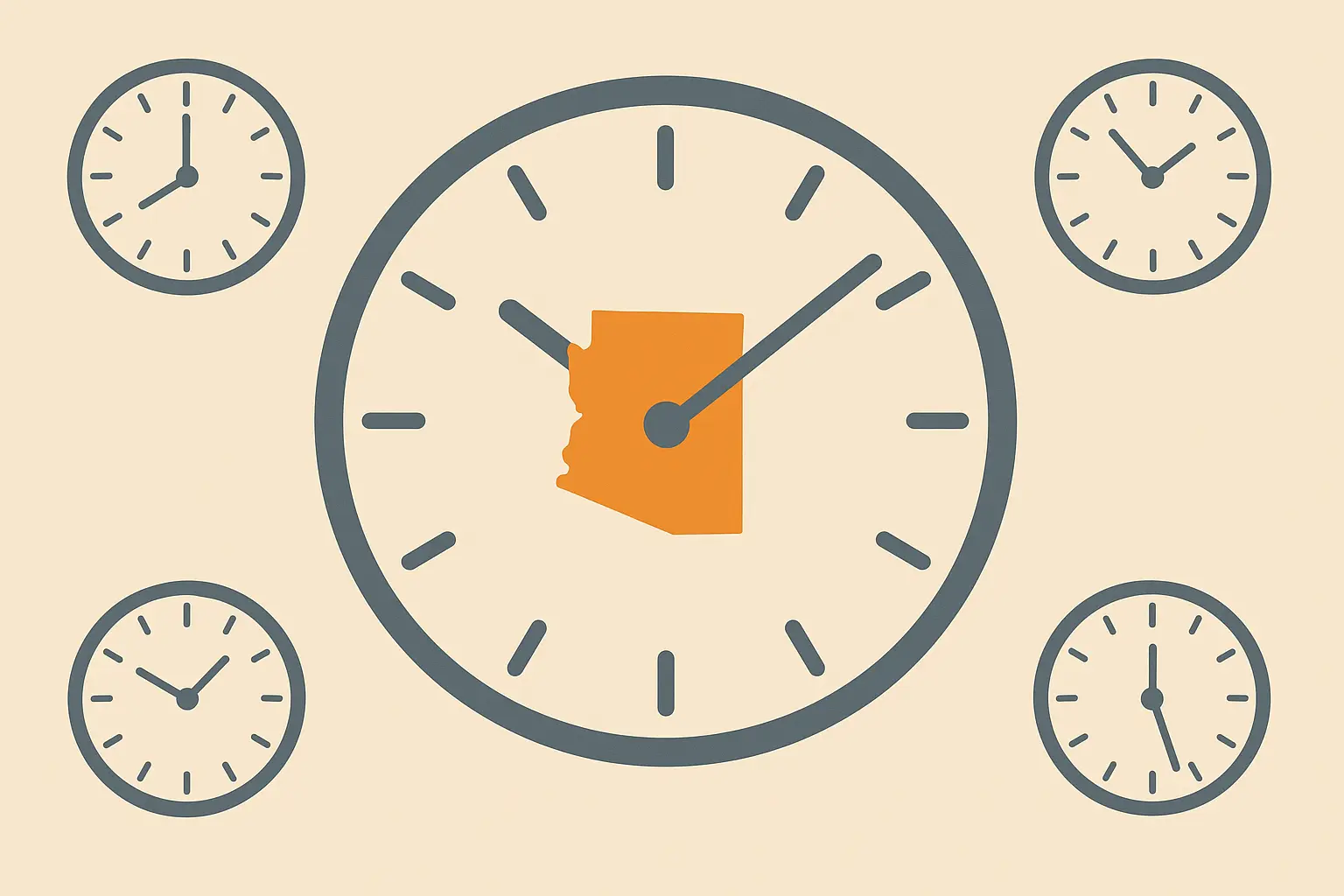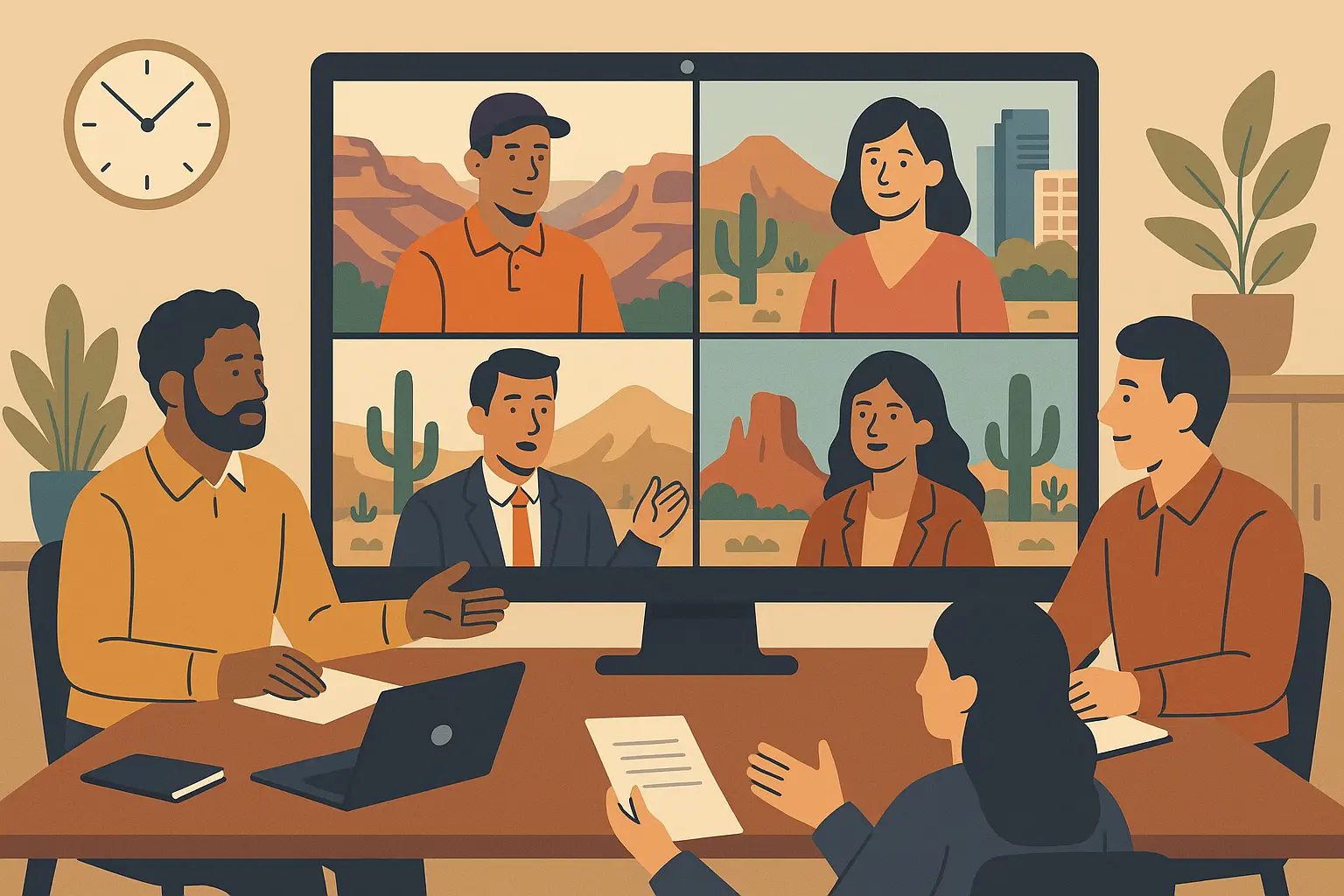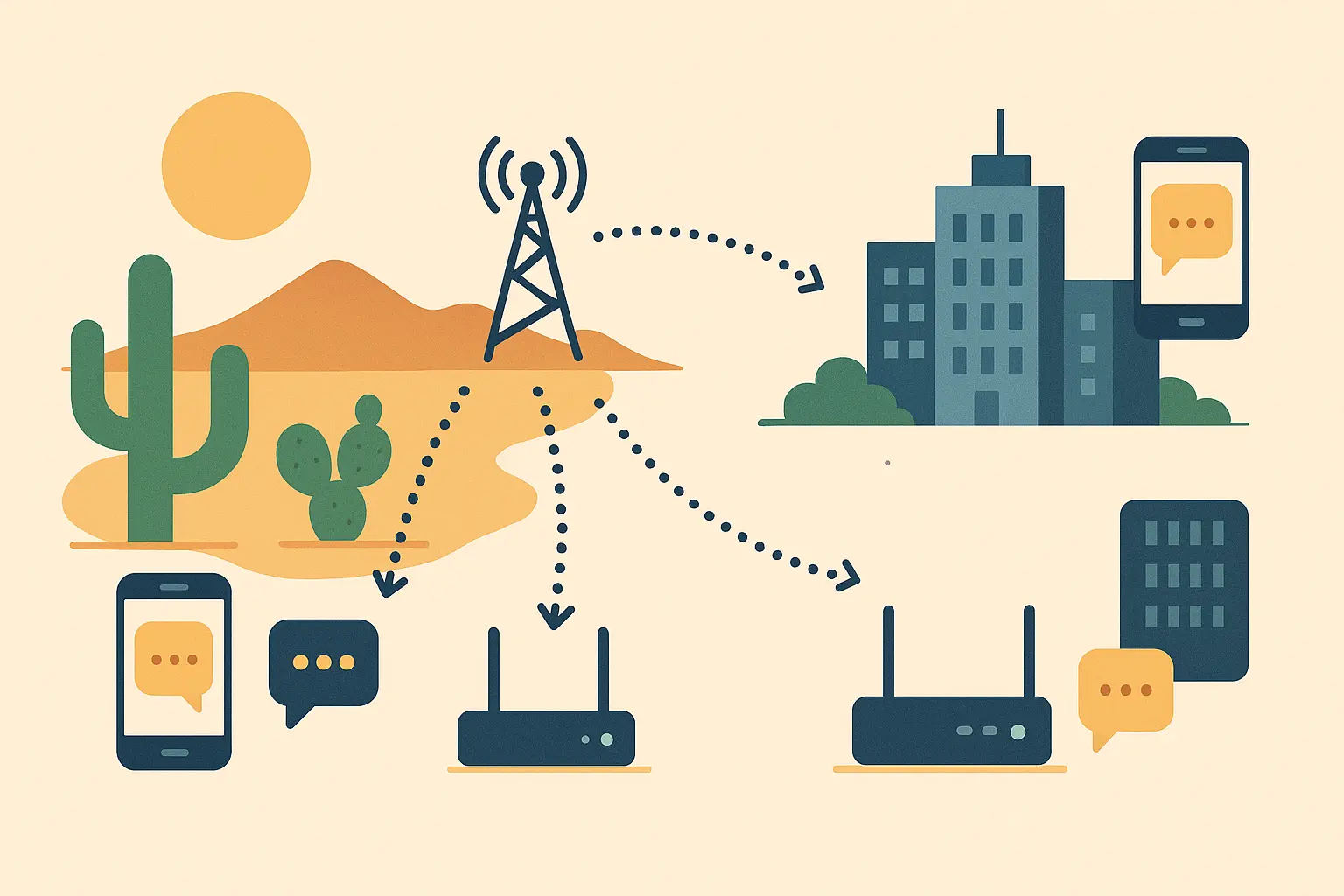Ever wonder why your phone works perfectly in Tucson but dies completely 20 miles outside the city? Welcome to the weird world of Arizona’s 520 area code – a massive region covering roughly 1,874,264 phone numbers across southern Arizona that creates communication headaches most people never see coming.
Table of Contents
Table of Contents
-
Where Your Phone Actually Works (And Where It Doesn’t)
-
The Phone Number Crisis That Split Arizona
-
Why Calls Drop in Dead Zones
-
Arizona’s Time Zone Rebellion
-
Border Town Communication Chaos
-
University Life Phone Problems
-
Rural Arizona Gets Left Behind
-
Business Communication Nightmares
-
Solutions That Actually Work
TL;DR
-
The 520 area code covers a massive chunk of southern Arizona – way bigger than most people realize
-
Arizona doesn’t change clocks for daylight saving time, creating year-round scheduling confusion
-
Rural areas have terrible cell coverage because it’s not profitable to fix
-
Border towns deal with phones connecting to Mexican towers, causing surprise charges
-
The area code was created in 1995 when Arizona ran out of 602 numbers
-
Universities, businesses, and rural folks all struggle with different communication problems
-
Modern SMS forwarding solutions can solve many coverage and reliability issues
Where Your Phone Actually Works (And Where It Doesn’t)
Look, I’ve lived in Arizona long enough to know that getting a 520 number is like joining a massive club that stretches from busy Tucson all the way to tiny border towns you’ve never heard of. And trust me, where you are in that massive area makes all the difference in whether your phone actually works.
Tucson Runs the Show
Tucson dominates the 520 landscape with over a million residents in the metro area. This desert city became the heart of the region, and its size influences everything from number availability to service quality.
With a population of about 1,057,597, Tucson is the largest city within the 520 area code according to Intelius data. That’s a lot of phones competing for the same towers. Rush hour? Forget about it. Football game at the U of A? Your Instagram won’t even load.
But here’s the thing – Tucson gets the best infrastructure because that’s where the money is. The cell companies actually invest in good equipment here because they can make their money back. The sheer volume of users in Tucson means better infrastructure investment, but it also creates network congestion during peak hours.
I’ve noticed that calls work great in most Tucson neighborhoods, but certain areas near the university can get overwhelmed during major events. The coverage here is generally solid, though you might experience slower data speeds during rush hour or when students flood back to campus.
The Metro Reality Check
The greater Tucson metropolitan region represents the densest concentration of numbers, creating both opportunities and challenges for reliable communication. Urban density means better infrastructure but also higher demand on networks. Users in suburban Tucson generally enjoy the most reliable service within the entire region.
The Other Cities Nobody Talks About
Flagstaff, Yuma, Sierra Vista, and dozens of smaller communities all share the 520 designation. These diverse locations – from mountain towns to desert communities – create a complex communication landscape that most people never consider.
Each of these cities brings unique challenges to the network. The area code works differently in mountain terrain versus desert flatlands, and the infrastructure requirements vary dramatically between locations.
|
City |
Population Range |
Primary Communication Challenges |
|---|---|---|
|
Tucson |
1,000,000+ |
Network congestion, urban density |
|
Flagstaff |
75,000+ |
Mountain terrain, elevation issues |
|
Yuma |
95,000+ |
Border interference, cross-state complications |
|
Sierra Vista |
45,000+ |
Military base coordination, rural gaps |
|
Nogales |
20,000+ |
International border complexities |
Flagstaff’s Mountain Challenge
High elevation and terrain create unique signal challenges for Flagstaff users, affecting both cellular and traditional phone services in ways that flat desert areas don’t experience. The numbers up there work fine most of the time, but winter weather can knock out service for hours.
Yuma’s Border Problems
Sitting right on the California border, Yuma faces cross-state communication complexities that affect everything from emergency services to business operations. Users here often deal with confusion about which state’s services they’re reaching when making calls.
Border Communities Face Cross-Border Chaos
Mexican border towns within the area deal with international communication challenges that go far beyond simple long-distance calling. Proximity to Mexico affects signal quality, emergency services, and business communications.
Understanding proper international number formatting becomes crucial for businesses operating near the Mexican border, where how to enter a phone number in international format can prevent costly communication errors.
International Signal Problems
Border proximity creates unique technical challenges where Mexican cell towers can interfere with US networks, leading to unexpected roaming charges and service disruptions. The region experiences this more than most areas because of the extensive border coverage.
A Nogales business owner discovered their employees’ phones were connecting to Mexican cell towers during peak hours, resulting in hundreds of dollars in unexpected international roaming charges on their company plan. This happens more often than you’d think in the area.
The Phone Number Crisis That Split Arizona
Back in 1995, Arizona was growing so fast that we literally ran out of phone numbers. The whole state used to be 602, but suddenly everyone and their brother was moving here, and the phone companies panicked.
So they split us up. Phoenix and the north got to keep 602 (typical), and southern Arizona got stuck with 520. It wasn’t personal, but it felt personal. The creation wasn’t just about running out of numbers – it was about managing a communication crisis that threatened to paralyze Arizona’s growing economy.
When 602 Couldn’t Keep Up
The mid-90s were crazy in Arizona. People were moving here faster than anyone could build houses, let alone phone infrastructure. Arizona’s rapid growth overwhelmed the original 602 system, and telecommunications companies realized they couldn’t serve the exploding population with just one area code.
The decision to give southern Arizona the new designation made sense geographically, but it created immediate confusion for residents and businesses who had operated under 602 for decades.
The Great Number Shortage Crisis
Think about it – every new house needed a phone line. Every new business needed multiple lines. Fax machines needed their own numbers (remember those?). Cell phones were just starting to take off. By the mid-1990s, Arizona was running out of available phone numbers within 602, creating an urgent need for expansion that affected businesses, residents, and emergency services.
Transition Chaos
The switch wasn’t smooth. Businesses had to reprint everything – business cards, letterhead, advertisements. Some companies spent thousands just updating their marketing materials overnight.
My neighbor owned a plumbing company, and he told me he had to throw away $5,000 worth of Yellow Pages ads because they all had the wrong area code. That was real money in 1995. Companies operating across Arizona had to navigate the complexity of maintaining operations with numbers in both area codes, creating logistical challenges that some businesses still deal with today.
From Landlines to Digital Revolution
The area code witnessed the complete transformation of how we communicate – from traditional landlines to mobile phones, VoIP services, and modern messaging platforms. This evolution created new opportunities but also new complications.
Mobile Changes Everything
The shift to mobile phones fundamentally changed how numbers are used and perceived, with many residents abandoning landlines entirely and creating new patterns of communication behavior. The region adapted to mobile technology faster than many other areas because of its younger demographic and tech-savvy university population.
Recent changes have added complexity to dialing patterns. Starting in 2021, “those in the area codes 520 (southern Arizona), 480 (parts of Maricopa and Pinal counties) and 928 (northern and western Arizona) will have to dial all 10 digits to make a local call” according to KOLD News 13, creating additional confusion for longtime residents.
This change affected how people think about calls – suddenly, what used to be a simple seven-digit local call required the full area code every time.
Why Calls Drop in Dead Zones
Here’s the truth nobody wants to tell you: large chunks of the region are communication dead zones. Not because the technology doesn’t exist, but because it’s not profitable to fix.
The vast geography creates serious communication dead zones and reliability issues that affect thousands of users daily. Have you ever wondered why your calls work perfectly in Tucson but fail completely twenty miles outside the city? The answer involves economics, geography, and infrastructure decisions that most people never consider.
Rural Arizona Gets Screwed
Drive 30 minutes outside Tucson in any direction, and watch your signal disappear. It’s not an accident – it’s economics. Cell companies won’t spend $300,000 on a tower to serve 50 ranch families. The math doesn’t work.
Remote areas within the region suffer from poor cellular infrastructure, creating communication black holes where calls fail and messages don’t deliver. The economics of serving sparsely populated areas means many rural users face ongoing connectivity challenges.
The area serves a total population of 2,618,669 people according to ZipAtlas data, but this population is spread across an enormous geographic area, making consistent coverage economically challenging for carriers.
When cellular networks fail in remote areas, many residents turn to how to forward text messages to an email address as a backup communication method that works through more reliable internet connections.
The coverage gaps aren’t random – they follow predictable patterns based on population density and terrain challenges. Where is the area most reliable? Generally in urban centers and along major highways. Where does service fail? In remote desert areas, mountain valleys, and border regions with complex terrain.
Desert Terrain Hates Signals
Mountains block signals. Valleys create dead spots. Even flat desert can be problematic because there’s nowhere to put towers without them being visible for miles (and people complain about that too). Arizona’s desert landscape, mountain ranges, and vast open spaces create natural barriers to cellular signals, making reliable communication difficult in many areas despite modern technology.
University Areas Get Overwhelmed
The University of Arizona campus is like a cell tower stress test twice a year. Move-in weekend and graduation completely crash the networks. Thousands of students and parents all trying to post photos and make calls at the same time.
The University of Arizona and other educational institutions create unique communication challenges with thousands of students and staff competing for network resources in concentrated areas, leading to congestion and service degradation.
Student Population Chaos
During University of Arizona graduation weekend, cellular networks become so congested that students and families often can’t send photos or make calls, forcing many to rely on campus WiFi for basic communication. The area around campus becomes essentially unusable for mobile communication during these peak events.
Seasonal changes in student population dramatically affect network performance in university areas, with move-in periods and major events creating temporary but severe communication bottlenecks.
Arizona’s Time Zone Rebellion
Arizona doesn’t change clocks for daylight saving time, and it screws with everyone’s head. Even people who’ve lived here for years still mess this up.
Arizona’s refusal to observe daylight saving time creates year-round confusion for anyone dealing with numbers in the region. This affects business scheduling, personal communications, and requires thinking differently about time when calling throughout the year.
Arizona’s Stubborn Time Stand
While the rest of the country is changing their clocks twice a year, Arizona just… doesn’t. We stay on Mountain Standard Time year-round, which means our relationship with other time zones keeps shifting.
While most of the country changes clocks twice a year, the region stays on Mountain Standard Time year-round. This creates a shifting relationship with other time zones that catches people off guard and complicates scheduling.
In summer, we’re the same time as California. In winter, we’re the same as Colorado. It’s confusing for everyone, including us. The time zone situation confuses even longtime residents sometimes. When someone from California calls a number in summer, they’re calling someone in the same time zone. But in winter? That same area code time becomes an hour ahead of California.
Business Meeting Disasters
I can’t tell you how many conference calls I’ve missed because someone forgot about Arizona’s time zone weirdness. Companies lose deals, people miss important calls, and everyone blames everyone else.
Companies operating across multiple time zones struggle with Arizona’s time consistency, leading to missed meetings, confused customers, and scheduling errors that affect business relationships.
Time Zone Quick Reference Checklist:
-
During summer months (March-November): Arizona = Pacific Time
-
During winter months (November-March): Arizona = Mountain Time
-
Always confirm current time difference before scheduling calls
-
Set calendar reminders to account for seasonal shifts
-
Update automated systems twice yearly for time changes
Seasonal Time Changes
The worst part? It changes depending on the season. A call scheduled for “3 PM Pacific” might be 3 PM Arizona time in July, but 4 PM Arizona time in December.
During daylight saving time, Arizona aligns with Pacific Time, but during standard time, it matches Mountain Time. This shifting relationship affects everything from TV schedules to conference calls.
I’ve seen businesses lose thousands of dollars because of missed conference calls due to time confusion. The problem gets worse during the transition weeks when some people remember the time change and others don’t.
Border Town Communication Chaos
Living near the Mexican border in the area comes with unique headaches that most people never consider.
Communities along the Mexican border face unique communication challenges that go beyond typical phone service issues. International proximity affects signal quality, emergency services, billing, and cross-border business communications.
Your Phone Thinks It’s in Mexico
Mexican cell towers are often stronger than US ones near the border. Your phone automatically connects to whatever signal is strongest, which means you might be “roaming internationally” while sitting in your living room in Nogales.
Mexican cell towers can capture phones near the border, leading to unexpected international roaming charges and service disruptions that catch users completely off guard. The border areas experience this problem more severely than other regions because of the extensive border coverage and the density of Mexican cell infrastructure just across the line.
911 Calls Gone Wrong
This is the scary one – sometimes 911 calls from border areas get routed to Mexican emergency services instead of US dispatchers. It doesn’t happen often, but when it does, those extra minutes can be life-or-death.
Border proximity can cause 911 calls to route to Mexican emergency services instead of US dispatchers, creating potentially dangerous delays in emergency response. This happens more often in the region than most people realize.
Business Gets Complicated
If you run a business near the border, good luck managing communications. Your employees might be getting charged international rates for local calls. Your customers can’t figure out which country they’re calling. It’s a mess.
Companies operating on both sides of the border need reliable communication systems that work regardless of which country their employees or customers are located in at any given moment.
|
Border Challenge |
Impact Level |
Common Solutions |
|---|---|---|
|
Signal spillover to Mexico |
High |
Carrier-specific settings, manual network selection |
|
Emergency call routing errors |
Critical |
GPS-enabled devices, backup communication methods |
|
International roaming charges |
Medium |
Border-specific phone plans, WiFi calling |
|
Language barriers in service |
Medium |
Bilingual support services, translation apps |
|
Cross-border business coordination |
High |
VoIP systems, dedicated business lines |
The complexity of managing communications near the border requires specialized knowledge that most telecommunications companies don’t provide in their standard customer service training.
University Life Phone Problems
The University of Arizona creates its own communication ecosystem within the area, and it’s not always pretty.
Student Population Overload
When 40,000+ students show up in August, the cell networks aren’t ready. When they all leave for winter break, suddenly there’s too much capacity. The networks can’t adapt fast enough to these massive population swings.
Game Day Network Crashes
Football Saturdays are brutal for cell service. 60,000 people trying to post photos, check scores, and call friends all at the same time. The towers just give up.
Students have learned to download offline maps and take screenshots of important info before big events, because they know their phones will be useless for hours.
Rural Arizona Gets Left Behind
If you live outside the cities in the region, you’re dealing with communication challenges that urban folks can’t even imagine.
The remote areas face communication challenges that urban users never consider. Infrastructure limitations, geographic barriers, and economic factors make reliable phone service difficult in rural Arizona, and these problems persist despite technological advances.
Infrastructure Economics Suck
Cell companies are businesses. They put towers where they can make money. Rural areas don’t make money, so rural areas don’t get towers. It’s that simple and that frustrating.
Telecommunications companies struggle to justify expensive infrastructure investments in sparsely populated rural areas, leaving many users with substandard service that affects their daily lives and business operations.
With 53.4% of people in the labor force and an unemployment rate of 7.5% according to ZipAtlas data, reliable communication becomes crucial for job searches and remote work opportunities in rural areas.
Rural businesses often struggle with basic communication setup, making getting started with AutoForward SMS for the first time essential for ensuring messages reach their destination despite poor cellular coverage.
The economics are brutal – installing a single cell tower costs hundreds of thousands of dollars, but serving fifty ranch families doesn’t generate enough revenue to justify the investment. Where is the area code most problematic? In these remote agricultural regions where families and businesses operate in virtual communication isolation.
Ranch and Farm Communication Isolation
A rancher I know drives 30 minutes to town just to check voicemail. That’s his reality in 2024. Agricultural operations across the region often operate in communication dead zones, affecting everything from emergency response to business operations and family safety. Ranchers tell me they drive twenty miles just to get enough signal to check voicemail.
Weather Makes Everything Worse
Monsoon storms knock out the few towers that do exist in rural areas. Dust storms interfere with signals. Even clear weather can be a problem when you’re 50 miles from the nearest tower.
Arizona’s extreme weather conditions, from monsoons to dust storms, can disrupt communication infrastructure in rural areas, creating temporary but significant service outages.
During Arizona’s monsoon season, a rancher in remote Cochise County lost all cellular service for three days when high winds damaged the only nearby cell tower, leaving them unable to coordinate cattle sales or contact emergency services. The area’s sparse infrastructure means one tower failure can isolate entire communities.
Dust storms create their own problems – the fine particles interfere with microwave transmissions between towers, causing service degradation even when equipment isn’t physically damaged. The region experiences more weather-related communication disruptions than most other area codes because of these unique environmental factors.
Emergency Services Gaps
When something goes wrong in rural areas, communication failures can literally be life-threatening. No cell service means no 911 calls, no way to contact family, no way to get help.
Business Communication Nightmares
Running a business in the area means dealing with communication challenges that companies in other area codes never face.
Companies operating within the vast region face unique communication challenges that affect customer service, employee coordination, and operational efficiency. Geographic spread, diverse customer bases, and infrastructure limitations create specific business problems that require creative solutions.
Multi-Location Nightmares
If your business has locations spread across the region, good luck maintaining consistent communication. Your Tucson office has great service, but your warehouse near the border might as well be on Mars.
Businesses with operations spread across the region must manage communications between locations that might be hundreds of miles apart, often with varying levels of service quality and reliability.
Many businesses with multiple locations find that forwarding text messages on an Android phone helps ensure critical communications reach all team members regardless of their current location’s cellular coverage quality.
A phone number might work perfectly at corporate headquarters in Tucson but fail completely at a remote warehouse near the border. This creates operational nightmares for companies trying to maintain consistent communication standards across their organization.
Customer Service Complexity
Serving customers across such a diverse area means some have fiber internet and others are still on dial-up. Some have perfect cell service, others have none. Your communication strategy has to account for all of it.
Serving customers across the diverse region means dealing with varying communication preferences, technological capabilities, and service expectations that can strain traditional customer service approaches. Some customers have reliable high-speed internet but terrible cellular service, while others have the opposite problem.
Seasonal Chaos
Tourism season, university schedules, agricultural cycles – they all create different communication demands throughout the year. Networks that work fine in February crash in March when spring training starts.
Tourism, agriculture, and education create seasonal communication demands that stress networks and require flexible solutions to maintain business continuity throughout the year.
Local businesses have found creative ways to celebrate their identity. “In Tucson, we’re celebrating 520 Day (you know, because it’s our area code), and here are some fun events happening this year on Tuesday, May 20” according to Tucson Foodie, showing how the area code has become part of local culture and business marketing.
The number has become a badge of local pride, but businesses still struggle with the practical challenges of serving such a geographically diverse customer base. Operations require more sophisticated communication strategies than most other regions.
Business Communication Audit Checklist:
-
Test call quality between all business locations
-
Verify emergency contact systems work in rural areas
-
Check customer service accessibility across the region
-
Evaluate seasonal communication capacity needs
-
Assess cross-border communication requirements
-
Review time zone coordination procedures
-
Test backup communication systems
Solutions That Actually Work
The good news? Technology has finally caught up with the area’s unique challenges.
Advanced SMS forwarding technology addresses many of the unique communication challenges that plague users in the region. Modern solutions help bridge coverage gaps, ensure message delivery in rural areas, and provide sophisticated management tools for the complex communication needs of this diverse Arizona region.
SMS Forwarding Saves the Day
When your cell service fails in rural areas, SMS forwarding can route your messages to email addresses that work through satellite internet or WiFi. It’s like having a backup communication system that actually works.
When cellular reception fails in remote areas, SMS forwarding ensures critical messages reach their destination by routing them to email addresses accessible through more reliable internet connections.
For businesses dealing with unreliable cellular coverage, learning how to forward text messages to a Slack channel creates a centralized communication hub that works even when traditional phone networks fail.
The region’s communication challenges make SMS forwarding particularly valuable. While your phone might not have cellular signal in a remote desert location, satellite internet or WiFi can still deliver forwarded messages to your email or business systems.
Rural Area Backup Systems
Auto Forward SMS provides a backup communication method for rural users, ensuring important messages get through even when cellular networks fail or provide spotty coverage. The area’s infrastructure limitations make this backup capability essential rather than optional.
WiFi Calling Changes Everything
Most newer phones can make calls over WiFi when cellular service fails. If you’ve got internet (even slow satellite internet), you can still make calls and send messages.
Business Solutions That Work
Companies are finally figuring out how to manage communications across the massive region. Cloud-based phone systems, message forwarding, and backup communication methods are becoming standard.
Companies operating across the expansive region can use SMS forwarding to ensure critical communications reach key personnel regardless of their location or current cellular reception quality.
Businesses have discovered that SMS forwarding works better than traditional phone systems for maintaining communication across their diverse geographic footprint. The technology adapts to the region’s unique challenges in ways that conventional phone services cannot.
Border Community Management
Businesses and individuals in border communities can create specific forwarding rules to manage cross-border communication complexity, ensuring relevant messages reach appropriate recipients without confusion.
Multi-Language Support
Auto Forward SMS’s native support for multiple languages, including Spanish, makes it particularly valuable for the diverse communities within the area, ensuring messages maintain their integrity regardless of language or special characters.
SMS Forwarding Setup Template:
-
Primary number: _______________
-
Backup email address: _____________
-
Emergency contact forwarding: ______
-
Business hours forwarding rules: ____
-
Weekend/after-hours routing: _______
-
International message handling: _____
-
Spam filtering preferences: ________
The area’s unique challenges require sophisticated solutions that traditional telecommunications companies often can’t provide. SMS forwarding technology fills these gaps by working around infrastructure limitations rather than trying to overcome them.
The area doesn’t have to mean unreliable communication anymore. You just need to be smarter about how you approach it.
Final Thoughts
The area code represents more than just a set of phone numbers – it’s a communication ecosystem shaped by Arizona’s unique geography, diverse communities, and complex infrastructure challenges. From Tucson’s urban density to remote border towns, from university campuses to rural ranches, each area within the region faces distinct communication hurdles that traditional phone services often can’t fully address.
Understanding these challenges helps explain why reliable communication remains such a persistent issue for many users. Whether you’re dealing with dropped calls in rural areas, time zone confusion, or cross-border communication complexity, recognizing these patterns is the first step toward finding effective solutions.
For businesses and individuals struggling with the communication challenges inherent in the region, modern SMS forwarding solutions offer practical ways to ensure message delivery and maintain connectivity when traditional networks fall short. The area’s communication landscape demands innovative approaches that work with the region’s limitations rather than against them.
Ready to solve your communication challenges? Try Auto Forward SMS today and experience reliable message delivery across Arizona’s most challenging communication landscape. The region doesn’t have to mean unre
Ready to solve your communication challenges? Try Auto Forward SMS today and experience reliable message delivery across Arizona’s most challenging communication landscape. The region doesn’t have to mean unreliable communication anymore.
